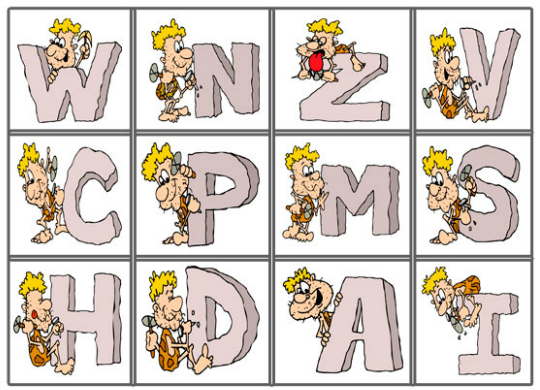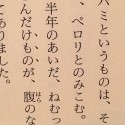The alphabet is a conventional array of letters that we commit to memory as children. Our letters don’t seem to have any inherent meanings (well, except for ones like “a,” which are standalone words), but we agree that they ought to be ordered thus: A, B, C, D, etc.
If you’re like me, from time to time, you might have asked yourself why. Our alphabet, of course, appears in the same order as the Middle and Old English alphabets (minus some letters), and we can trace this alphabetic chain of inheritance back to Classical Latin. Each subsequent writing system seems to draw on its predecessors. The Ancient Greek alphabet, which was the world’s first alphabetic writing system, for example, drew on the characters from the Phoenician syllabary, which were themselves derived from pictograms. (The character A is, apparently, representative of a now-upside-down bull’s head, for instance.) But, so, there had to be someone (likely a group, or perhaps really an individual) at the outset who ordered the library of writing system symbols, right? Is it really possible that they did so in a completely arbitrary way?
Semiotician Sergey G. Proskurin has presented evidence that the ordering of the alphabet has significance that reflects the cosmology of its originators. I came across his most recent paper in Semiotica, “Semiotics and Writing Systems,” which was my introduction to his work, but if you’re interested, you can trace his research back quite a ways. Now, the writing is pretty rough, and some of his assertions are sweeping and, in my judgment, overambitious for the evidence that is actually presented, and then there’s the general unease of this whole thing smacking of Medieval numerology… but it’s an interesting paper nonetheless, and it’s fascinating to think about.
In the paper, Proskurin shows how the first three letters and the middle three letters of the alphabet may have been meaningful for Indo-European societies. (And can be, by extension, meaningful to us, too, in this vestigial capacity.)
Proskurin first examines the first three letters of Old Gothic, explaining that their pronunciation relates to a ritual utterance that praises God for giving the gift of writing to the people. In Old Slavic, the first three letters reflect the saying, “I know the letters.”
There seems to be some particular importance with the letter three—and thus the first three letters of the alphabet. Whereas it is difficult to find a common Indo-European root for the numbers one and two, the number three is easily traceable. Proskurin suggests this may be because of the additive sequence 1 + 2 = 3, which goes in order. This is not found anywhere else in our number system. Indeed, even today (and even though, curiously, our own word “alphabet” only includes the first two letters), we often talk about “the ABC’s” as a unit.
Then Proskurin moves on to examining the middle of the alphabet. He discusses the Latin alphabet, which had 25 letters. At the exact middle of the alphabet is the sequence L, M, N, which was pronounced as we pronounce it: elemen. This recalls the Latin word “elementum,” denoting the smallest parts of the material world. In this way, the central letters of the alphabet seem to reflect something about Roman cosmological knowledge. Proskurin says it is expectable that the middle of the alphabet would be used to share cosmological knowledge: He cites the concept of the world tree, for example, unique to Indo-European cultures, which segments the universe in three levels, and in which we occupy the middle. “It is not difficult to show,” he says, “that, in specific geographic areas where trees were used in ancient times to represent the boundary between adjacent fields of settlements, the concept of a ‘world tree’ or a ‘tree of life’ emerged” (p. 270), whereas this is apparently not universal.
As I mentioned, the evidence seems a bit too sparse to suggest that there is a grand meaning hidden in the design of ABCDEFGHIJKLMNOPQRSTUVWXYZ, but the tidbits Proskurin presents sure are tantalizing. Perhaps, indeed, the ancient alphabets were organized by some meaningful principle. I’d love to see a fully-fledged study on the topic that considers as many writing systems and time periods as possible. (I’d also like to see a fair discussion of counter-examples, which is notably absent from virtually all work in semiotics.)

 Follow
Follow


Interesting and stimulating. Thank you once more!
Thanks! It’s been a busy summer, but I plan to get back to posting more regularly now 🙂